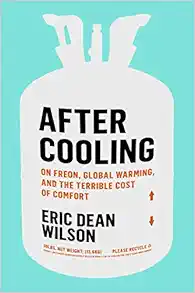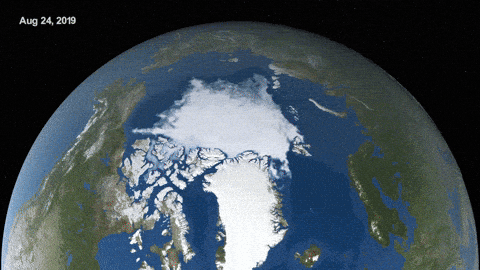Book Review: "After Cooling" by Eric Dean Wilson
*Spoiler warning!*
4/5 stars
In a time that seems ripe for change, it felt right to read After Cooling: On Freon, Global Warming, and the Terrible Cost of Comfort. I feel like I have been reading a fair number of books urging major re-thinks lately, and it is worth the effort. Otherwise, how am I to learn or grow as a person?
After Cooling's main topic is the history of air conditioning and refrigerants in general and how it's contributed to our current climate crisis. Previously, the most I had been exposed to of the latter was learning of the ozone crisis in school. Like most history lessons, it felt distant to me, a crisis that once happened, but was now over, solved by the world banding together in the form of the Montreal Protocol treaty to phase down and ban ozone-destroying CFCs for the good of everyone. The ozone layer was now regenerating and should be completely whole again by 2070; a major bullet had been dodged to life on Earth. We were safe now.
Color me surprised then to learn through this book that the ozone layer issue is an ongoing crisis, and that ozone layer depletion is very much connected with our current climate change crisis. (In retrospect, it should not have surprised me as much.)
As global of a problem as ozone depletion and climate change are, it is even more alarming to me that it is a symptom of a larger issue of our collective culture, institutions, and mindsets. A mindset and accompanying culture and institutions that the West has exported to more areas of the world.
But let us back up for a second from the present to contextualize the current moment.
Artificial cooling did not really take on until business realized it could be useful to increase productivity--the first major application being on facilitating increased trade on the New York Stock Exchange in 1902. It allowed for the seeming insulation of delicate manufacturing processes and workers from the whims of the weather, allowing for stable, predictable conditions in which to work (which led to profit).
It slowly spread to other businesses and then to the public on the backs of an industry-defined set of standards around comfort that translated into a powerful cultural ideal, a veritable symbol of a certain type of middle-class lifestyle. One of material comfort and insulation from the hazards of the world, an illusion of individualized safety that not everyone had access to.
Of course, there is no way to completely isolate yourself from the world. Because you are still a part of the world, there's consequences to your actions.
These consequences became apparent when it became apparent that CFCs--in particular, Freon--were destroying the ozone layer. The ozone layer is a very thin layer in the stratosphere that protects us from the most harmful of UV radiation. It very much makes life possible. (UV radiation can impair immune functions, damage DNA, and trigger cancers. Not ideal conditions for any life to survive. Maybe tardigrades could survive in such a world, but not much else.)
While the ozone layer problem seemed to be solved by the Montreal Protocol and industrial adoption of a new class of ostensibly "ozone-friendly" refrigerants after the halt of CFC production in the 1990s, it turns out the replacements--HFCs and HCFCs--also could damage the ozone layer, albeit much less than their CFC predecessors. Not to mention that these ozone depleting substances were (are) really, really good at being greenhouse gases as well, better than CO2. Just one molecule of early CFCs could hold up to 11,000 times the heat that one molecule of carbon dioxide could (can). Later refrigerants not as much as CFCs, but still substantially more than CO2.
My reasoning for the various tenses in the last sentence is that there is a large underground economy for CFCs in particular. So, we cannot talk about them just as a past problem--as implied by the past tense--but as an ongoing, present problem, hence the present tense in parentheses.
Author Eric Dean Wilson's friend, Sam, worked for a company that sought to gather as much of this remaining CFC as possible for destruction, before it could enter the atmosphere and cause trouble. This narrative interweaves through Wilson's discussion of the history of refrigerants and their costs in the form of ozone depletion and climate change, things that very much still plague us in the present.
Solutions for the current global environmental crises?
Wilson does not want us all to ditch our air conditioners or go without refrigerators or makes the argument that CFC reclamation work like his friend's will be the solo needed fix. Rather, he argues for shifting our collective mindset, of investing in public cooling solutions rather than individualized ones. This shift from an individual to a more collective mindset, one that recognizes that when some of us are in danger from climate change, all of us are in danger.
Easier said than done, right? Yes, changing hearts and minds will be an exceedingly arduous process, but nevertheless an important one as we work to combat the worst effects of climate change, not only for present generations, but also future generations.
An eye-opening book. Worth the read!
Happy reading!
--Book Owl










Comments
Post a Comment